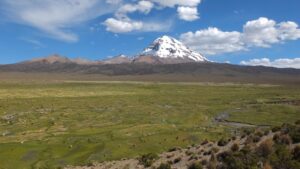FS 3.104: Treeline dynamics in the Karakoram
Details
Full Title
Treeline dynamics of pine and birch in response to climate change in the Karakoram
Scheduled
—
Convener
Co-Conveners
Assigned to Synthesis Workshop
—
Categories
Conservation, ES-Forests, Paleoperspective
Keywords
Climate Change, Alpine treelines, dendrochronology
Description
Alpine treeline is considered as a sensitive indicator to climate change. Since low temperature is a primary constraint of treeline dynamics, upslope shifts in response to climate warming are expected. The Karakoram, under a westerly-dominated climate, has experienced significant warming since the mid-nineteenth century. However, in comparison to adjacent mountains, little is known how alpine treelines have responded to rising temperatures in westerly-dominated dry areas, such as the Karakoram. To test if climate warming triggered upslope shift of alpine treelines in the Karakoram, we compared the recent dynamics of blue pine (Pinus wallichiana) and Himalayan birch (Betula utilis) treeline populations. We expected a higher responsiveness of pine recruitment to temperature as compared with birch due to the higher drought tolerance of pine species. Tree mapping and dendrochronological methods were used to determine stand age structure, and to reconstruct spatiotemporal treeline dynamics during the past 150 years. The decadal recruitment rate of pine was positively correlated with summer and winter temperatures, whereas the birch recruitment was negatively correlated. Accordingly, pine treelines showed significant upslope shifts in two out of three plots, whilst two birch treelines remained stable in the two studied plots. Such different treeline shift rates agree with their divergent recruitment responses to climate warming. Thus, projected warming in the Karakoram will differently impact treelines depending on species-specific responses with pine showing a more dynamic and rapid upward treeline advancement.


